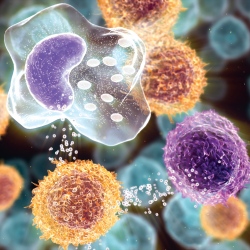
Computer analyses of breast cancer microscopic images were found more accurate than those conducted by humans, computer scientists at the Stanford School of Engineering and pathologists at the Stanford School of Medicine report.
The researchers’ Computational Pathologist (C-Path) is a machine-learning-based method for automatically analyzing images of cancerous tissues and predicting patient survival.
Since 1928, the way breast cancer characteristics are evaluated and categorized has remained largely unchanged: done by hand, under a microscope. Pathologists examine the tumors visually and score them according to a scale first developed eight decades ago. These scores help doctors assess the type and severity of the cancer and calculate the patient’s prognosis and course of treatment.
Medical science has long used three specific features for evaluating breast cancer cells: what percentage of the tumor is comprised of tube-like cells, the diversity of the nuclei in the outermost (epithelial) cells of the tumor and the frequency with which those cells divide (a process known as mitosis). These three factors are judged by sight with a microscope and scored qualitatively to stratify breast cancer patients into three groups that predict survival rates.
